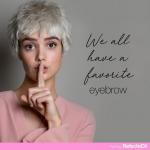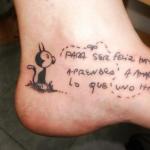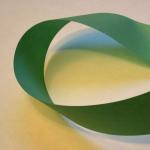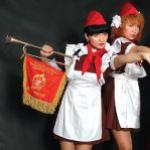Rooster template for painting Dymkovo toys. Summary of the lesson “Dymkovo toy” for children of the preparatory group
Drawing lesson in the middle group
Master class on drawing. Decorative plate "Dymkovo horse"
This master class is intended for kindergarten teachers, parents, children 4-5 years old
This Master Class Recommended for children aged 4-5 years.
Target: teach to create decorative item for interior decoration
Tasks:
1. Strengthen the ability to draw with a poke, cotton swab,toothpick
2. Learn to draw patterns rhythmically and combine colors
3. Develop fine motor skills
4. Cultivate accuracy in work and the ability to complete the work started
5. Instill a love for folk crafts
6. Cultivate artistic taste
Material:
large circle made of colored cardboard (A4 cardboard format), Dymkovo horse template, gouache, pokes, cotton swabs, toothpicks, water jar, brushes, glue stick
Dymkovo toy is a wonderful craft. Both adults and children are attracted to bright, funny toys. These products are pleasing to the eye, lift their spirits, and reveal the world. happy holiday. In March, the kids from my group and I worked on the project “Getting to know the Dymkovo toy.” We learned the history of this toy, looked at the toys and illustrations of the most popular toys (the lady, the peasant woman, the duck, the turkey, the horse, the rider, we visited the “Bright Haze” exhibition in the art studio of our garden. We also drew individual elements Dymkovo patterns, sculpted and painted the Dymkovo duck.
Guys! Today we will make a beautiful plate to decorate your home, but not a simple plate, but a Dymkovo plate! Want to? Then let's get down to business.
Before us lies the material for our plate.

The first thing you need to do is glue the template of our horse onto a plate

We need to apply glue to our template and carefully glue it in the center of the plate

Now let’s start decorating the plate with Dymkovo patterns. First, using a foam rubber poke, we apply large circles all over the horse figurine. You can choose any color from the bright Dymkovo palette, for me it’s red.

Now, among the large circles, we will draw small circles with a cotton swab; for them we chose a different paint, in a contrasting color

Draw large circles around the perimeter of the circle with a foam rubber poke, do not forget to draw rhythmically, leaving equal intervals

And between the large circles we draw small circles with a cotton swab

Let's check if the paint on the large circles has dried? If yes, then use a toothpick to very carefully place a small black dot in the middle of the large circles.

Using a thin brush, carefully paint the tail and ears of our horse, and paint the hooves with black paint.
This is such a handsome guy we have!

And this is our finished decorative plate “Dymkovo Horse”. In order for it to be used to decorate the house, we will glue a ribbon on the back side.

This is how beautiful our plate will look on the wall
The world of Dymkovo toys is a world of fabulously elegant, beautiful and expressive plastic figures of animals, people, and birds. Images of folk sculpture are easily recognizable by children and delight them with bright colorful ornaments. Children quickly get involved in creative games, enjoy composing and trying to realize their ideas. The following classes are taught using the workbook: “Multicolored smokes”, “Riders”, patterns “Sun”, “Duck with ducklings”, “Dymkovo patterns”, “Turkey”, “Peasant outfit”, “Bird and water carrier”.



The first lesson is introductory. Children look at the Dymkovo figures, answer questions about color, the variety of geometric pattern elements, and share their impressions. Please note: distinctive feature Dymkovo palette - bright, festive colors. At the end of the lesson, children select the colors of the Dymkovo palette on a sheet of paper.

We draw attention to the unusual image of a rider on a goat. Children “revive” the figures by repeating familiar patterns on the silhouettes. Patterns are drawn immediately with a brush, without preliminary drawing with a pencil - this is how folk artists draw. It is better to work with gouache paints.
The sides are steep,
Frilled hooves
On Egorka's back.
(A. Dyakov)

We draw patterns with a brush and a stamp. Children make their own large and small signet-poke. To do this, you need to tightly twist a strip of paper, as shown in the figure. Each paint has its own poke.
Children draw a “sun” pattern using a brush and a poke signet. The sequence of the pattern is shown in the figure.

Duck is a favorite image in folk art, associated with the sun, abundance. The chest and wings of the bird are decorated with patterns reminiscent of a large and small sun.
Children choose their own colors and decorate the duck with ducklings with a “sun” pattern.
Marfutka Duck
Walks along the shore
Duck-Marfa dots
Leads to swim.
(T. Mavrina)

We continue our acquaintance with Dymkovo patterns using the example of painting the decorative plumage of a turkey’s tail. Children complete the painting using a brush and a poke signet. Various brush techniques are used: drawing wavy lines of the same thickness, applying a brush to depict a decorative flower.
Pay attention to how the rhythm of the pattern matches the round shape of the tail.

The turkey is a traditional Dymkovo motif. Children look at a color illustration or toy and read a quatrain by folk artist A. Dyakov.
Children paint a turkey figurine with a brush and a stamp, varying and creating patterns on their own.

Children practice drawing horizontal and vertical colored lines on a skirt with a brush, and decorate the checkered pattern with additional elements.

In the decorative painting of these figures you can see a peculiar reflection of the elements of folk clothing: kokoshnik, earrings, beads, jacket, skirt, apron. As in a folk costume, everything is decorated with patterns. The patterns are harmoniously combined in color.
When painting a figurine of a peasant woman, children independently vary the patterns. When drawing patterns with a brush, it is better to start with large elements.

Children practice painting by completing patterns on skirts. We consolidate various techniques of working with a brush: drawing lines of different thicknesses and directions, applying an imprint with the entire brush and the end of the brush. The work uses a poke signet.

The lady's outfit is amazing beautiful patterns, an abundance of shuttlecocks. In the sculpting and painting of this figurine, folk craftsmen reflected the originality of the fashion of city women of bygone years.
Children independently vary the decorative elements of clothing on the lady’s figurine.
We continue to develop the aesthetic emotional perception of the image.

The picture shows the stages of sculpting by the master Dymkovskaya. The main feature is clay figures.
To work you will need:
board-stand (wooden, plastic or linoleum);
stacks - wooden or plastic sticks with flat rounded ends different shapes(see cover);
a jar of water;
cloth
The molded clay figurine must dry, this will take several days. Then you can paint the figurine without firing it in a muffle furnace. First we cover it with 2-3 layers of white paint. You can use white gouache, but it is better to use water-based white paint - the white background will be brighter and cleaner. Colored gouache patterns are applied over the dried background.
If the figurine was sculpted from a, then before painting it is necessary to degrease the surface using crushed chalk or tooth powder.


The figurine of the horse, like the figurine of the lady, is sculpted by folk craftsmen in parts. The figure shows what blanks need to be molded to make a horse. The numbers indicate the sequence of connecting and smearing the parts.

The image of a horse in folk art, like the image of a bird, is loved and revered. These images are associated with the ancient cult of the sun. Like all Dymkovo figurines, the horse looks festive and elegant. Before painting the sculpted figurine, children compose and draw their fairytale horse in a notebook.

Performance at a toy circus. All Dymkovo toys look festive and elegant. Not all of the figures are painted. Children must independently complete the appearance of the toy performers and color the carpet in the circus arena with Dymkovo patterns.

Other Dymkovo heroes also rush to take part in the performance: Ivan the pike rider, the bear and the cockerel. Children come up with their own patterns and paint the figures.

These are the final lessons. Children show creative activity in composing and improvising based on the Dymkovo ornament. The ornament can also be depicted around toys, enhancing festive mood. It is advisable to combine such a task with sculpting various figures of Dymkovo toys and fairy-tale heroes written by children.
From the figures you can make table theater: “Merry carousel at the fair”, “The Kingdom of Dymkovo”, etc. While acting out the performance, children can read riddles, jokes, poems about haze.




Summary of the lesson “Dymkovo toy” for children 6-7 years old
Naira Igorevna Nersesyan, teacher at MBDOU " Kindergarten general developmental type No. 144", VoronezhPurpose: educators of senior and preparatory groups, teachers primary classes,parents.
Target: Introducing children to folk culture.
Tasks:
-Introduce the history of the Dymkovo toy.
-Cultivate love and respect for work folk craftsmen, to the folk art of Russia.
-To consolidate children’s knowledge about the process of making Dymkovo toys and the ability to talk about it.
-To develop knowledge about the characteristic features of painting toys, the ability to create patterns according to one’s own design. Learn to identify the elements of the geometric pattern of Dymkovo painting (circles, straight and wavy lines, checkered patterns, dots and peas). Learn to paint with Dymkovo patterns.
-Develop aesthetic perception, sense of rhythm, color, Creative skills. Deepen aesthetic knowledge of folk arts and crafts.
Preliminary work: drawing up a presentation “Dymkovo toy”, original Dymkovo toys for demonstration, printed stencils on white paper (A4 format) and colored pencils.
Lesson plan:
- 1. Organizational moment
2. Theoretical part. An introductory conversation about the history and process of creation with a demonstration of Dymkovo toys, paintings, presentations. An explanation of the painting sequence.
3. Final part.
Progress of the lesson
Educator: Guys, you all have toys, but what are they made of?Children: Our toys are made of plastic, rubber, metal, wood, fabric.
Educator: Let's find out what toys are made in the village of Dymkoye?
What is Dymkovo famous for?
With his toy.
There is no smoky color in it,
And there is the love of people.
There's something of the rainbow in her,
From drops of dew.
There is something of joy in her,
Thundering like bass.
(V. Feofanov)
Educator: People affectionately and tenderly call this toy “haze.” Where does such an amazing name come from? Let us introduce you to Dymkovo clay toys. I was born in the large settlement of Dymkovo across the river near the city of Vyatka. In ancient times, residents of this settlement, young and old, sculpted clay toys for the spring fair. In winter, the entire settlement is in smoke from the fact that the stoves are heated and toys are burned. On cloudy days, the fog from the river spreads like a light haze. Perhaps this is where the name Dymkoye arose, and the toys began to be called Dymkovo. Dymkovo toys were made for an ancient holiday<Свистопляска>.Later the fair-festival began to be called<Свистунья>. What kind of toys are these, let's see?




Through the mountain spurs,
Over the rooftops of villages
Red-horned, yellow-horned
A clay deer rushes.

Here is a smart turkey,
He's all so good
The big turkey
All sides are painted.
Look, his bushy tail is not simple at all,
Just like a sunny flower
Yes, and a scallop.

The Dymkovo young lady is all in orange, gold, scarlet and green patterns.

Look how good she is
This girl is a soul
Scarlet cheeks are burning,
Amazing outfit.
Even the horses are in festive outfits.

Clay horses are racing
On stands as best we can.
And they won’t hold on by the tail,
If you missed the mane.
Educator: What do all these toys have in common?
Children: All toys have bright colors, everything is on a white background, covered with beautiful patterns.
Educator: What paint do you think the toy is first coated with?
Children: White. On a white background, the patterns stand out well and beautifully..
Educator: Can you guess where the masters got the white color from?
Children: They took it from the snow, from winter. The toys were made in winter!!!
Educator: That's right. The white background was taken by the masters from the snow-covered fields, when in winter everything around is white and white. In those places winter is long and there is a lot of snow. Craftsmen want to make the toy as clean and white as snow. Why are they bright?

Children: Because they were made for the holiday, so they painted them with bright colors.
Educator: What colors did the craftsmen use to paint toys?
Children: They used bright colors: red, blue, crimson, yellow, orange, green.
Educator: What patterns do you see on toys?
Children: On the toys there are circles, dots, lines, squares, stripes, curves, waves, squares, rings, ovals.



Educator: What images can be seen in Dymkovo toys?
Children: Horse, cockerel, deer, ram, young lady.
Educator: The most common subjects: nannies with children, water carriers, rams with golden horns, turkeys, roosters, deer and, of course, young people, buffoons, ladies.



Educator: Let's find out how a toy is created?
(Children watch the video on the interactive board, the teacher talks at the same time).
A lot of work must be put into making the toy so elegant. It is born three times. The first time it is born is when it is sculpted from red clay. The figures are sculpted in parts, individual parts are assembled and completed, using liquid red clay as a binding material. The molding marks are smoothed out to give the product a smooth and neat surface. The toy must be burned to make it durable. The intense heat causes the toy to become hot, and when it cools down, the clay becomes ringing and strong. This is how the toy is born a second time. There is a trial by fire. And when is the third time born?
Children: The third time a toy is born is when it is whitewashed and painted.
Educator: Then it is whitewashed with chalk diluted with milk and painted. Sometimes pieces of gold leaf are stuck on top of the pattern, which makes the toy even more elegant. This is how it is born for the third time. Beautiful, bright, elegant toys are sold at the fair. Making a toy, from modeling to painting, is a process unique and creative, never the same. There are not and cannot be two absolutely identical products. Each toy is unique, unique and inimitable.
Master class on drawing. Painting the toy "Dymkovo Cockerel"
Soldatova Elena Ivanovna, primary school teacher, Municipal Educational Institution "Secondary School No. 1 of Novouzensk, Saratov Region"Description: The master class is designed for students in grades 1-2, teachers, educators, parents of all those who love to create miracles.
Usage: as a gift, interior decoration, work for an exhibition.
Target: painting of Dymkovo toy
Tasks:
- Teach children to paint a toy using different patterns
- Develop fantasy, imagination, aesthetic taste
- To cultivate in children taste, a sense of color, respect for the work of Dymkovo craftsmen
- Give pleasure to yourself and others
DURING THE CLASSES.
Let's sit side by side and talk well. I wanted to tell you guys an amazing story. In a certain kingdom of the Russian state, on the bank of a river stood, and still stands, the large village of Dymkovo. Extraordinary toys were born in the village. On long winter evenings they sculpted those toys from clay.
All toys are not simple,
And magically painted.
Snow-white, like birch trees,
Circles, stripes.
A seemingly simple pattern
But I can't take my eyes off
The toys made by Dymkovo craftsmen turned out to be unusually beautiful, bright, fabulous, and magical. People believed that these toys protected them from misfortunes and troubles. Therefore, they were placed between the windows in winter and decorated with toys at home.
-Today we will paint one of the Dymkovo toys. Guess which one?
-An unknown bird appeared,
Everyone marvels at her:
Doesn't sing and doesn't fly,
Everything is on fire and blazing.
Far across the world
Everyone knows this birdie,
This is not a simple bird -
Painted, gold,
Just a miracle - a trinket,
Its name is the folk toy.(Dymkovo cockerel toy)

For work we will need materials and tools:
-gouache
- tassels
-album
-scissors
- a simple pencil

1. Take a landscape sheet and trace your palm.

2.Draw the outline of the cockerel and cut it out.

3.Trace the wing of the cockerel according to the template.

4. Before we start painting, let’s remember what elements of Dymkovo painting you know (circles, rings, dots, stripes, wavy lines, diamonds)

5.First, draw the comb, beard, and large elements of the pattern, using a thicker brush.



6.Now, using a thinner brush, we draw smaller patterns.






